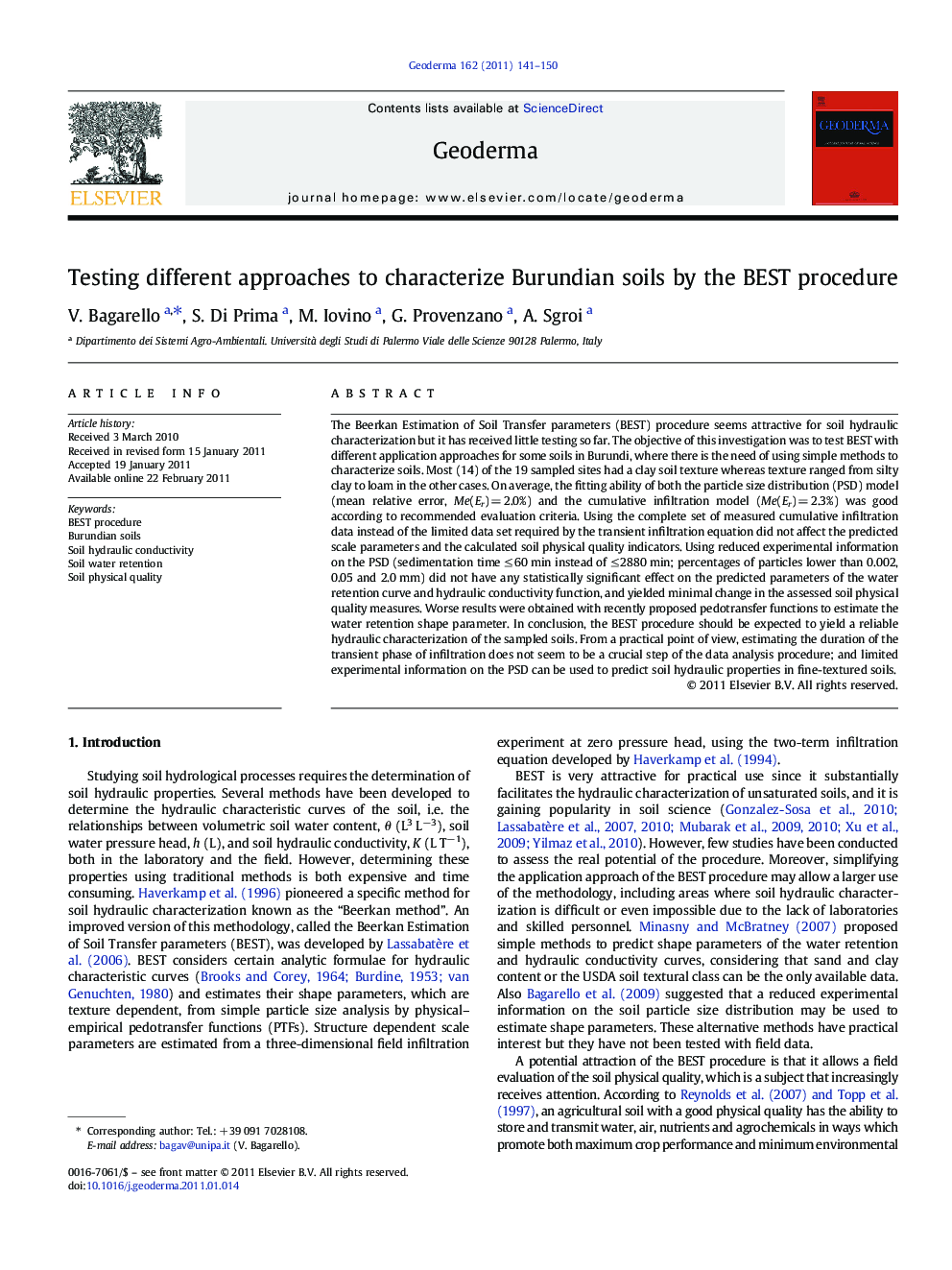| Article ID | Journal | Published Year | Pages | File Type |
|---|---|---|---|---|
| 4574119 | Geoderma | 2011 | 10 Pages |
The Beerkan Estimation of Soil Transfer parameters (BEST) procedure seems attractive for soil hydraulic characterization but it has received little testing so far. The objective of this investigation was to test BEST with different application approaches for some soils in Burundi, where there is the need of using simple methods to characterize soils. Most (14) of the 19 sampled sites had a clay soil texture whereas texture ranged from silty clay to loam in the other cases. On average, the fitting ability of both the particle size distribution (PSD) model (mean relative error, Me(Er) = 2.0%) and the cumulative infiltration model (Me(Er) = 2.3%) was good according to recommended evaluation criteria. Using the complete set of measured cumulative infiltration data instead of the limited data set required by the transient infiltration equation did not affect the predicted scale parameters and the calculated soil physical quality indicators. Using reduced experimental information on the PSD (sedimentation time ≤ 60 min instead of ≤ 2880 min; percentages of particles lower than 0.002, 0.05 and 2.0 mm) did not have any statistically significant effect on the predicted parameters of the water retention curve and hydraulic conductivity function, and yielded minimal change in the assessed soil physical quality measures. Worse results were obtained with recently proposed pedotransfer functions to estimate the water retention shape parameter. In conclusion, the BEST procedure should be expected to yield a reliable hydraulic characterization of the sampled soils. From a practical point of view, estimating the duration of the transient phase of infiltration does not seem to be a crucial step of the data analysis procedure; and limited experimental information on the PSD can be used to predict soil hydraulic properties in fine-textured soils.
Research Highlights► Simple methods have to be used to hydraulically characterize soils in Burundi. ► Different approaches to apply the BEST procedure were tested for some Burundian soils. ► BEST is expected to reliably characterize sampled soils. ► Estimating the time validity of the infiltration equation does not seem crucial. ► A few particle size distribution data are enough to apply BEST in fine-textured soils.
